PRESTO PLANS
Sent straight to your inbox
CLICK HERE TO ACCESS
Sign up to receive 10 ready-to-use ELA resources your students will love!
10 FREE ELA RESOURCES
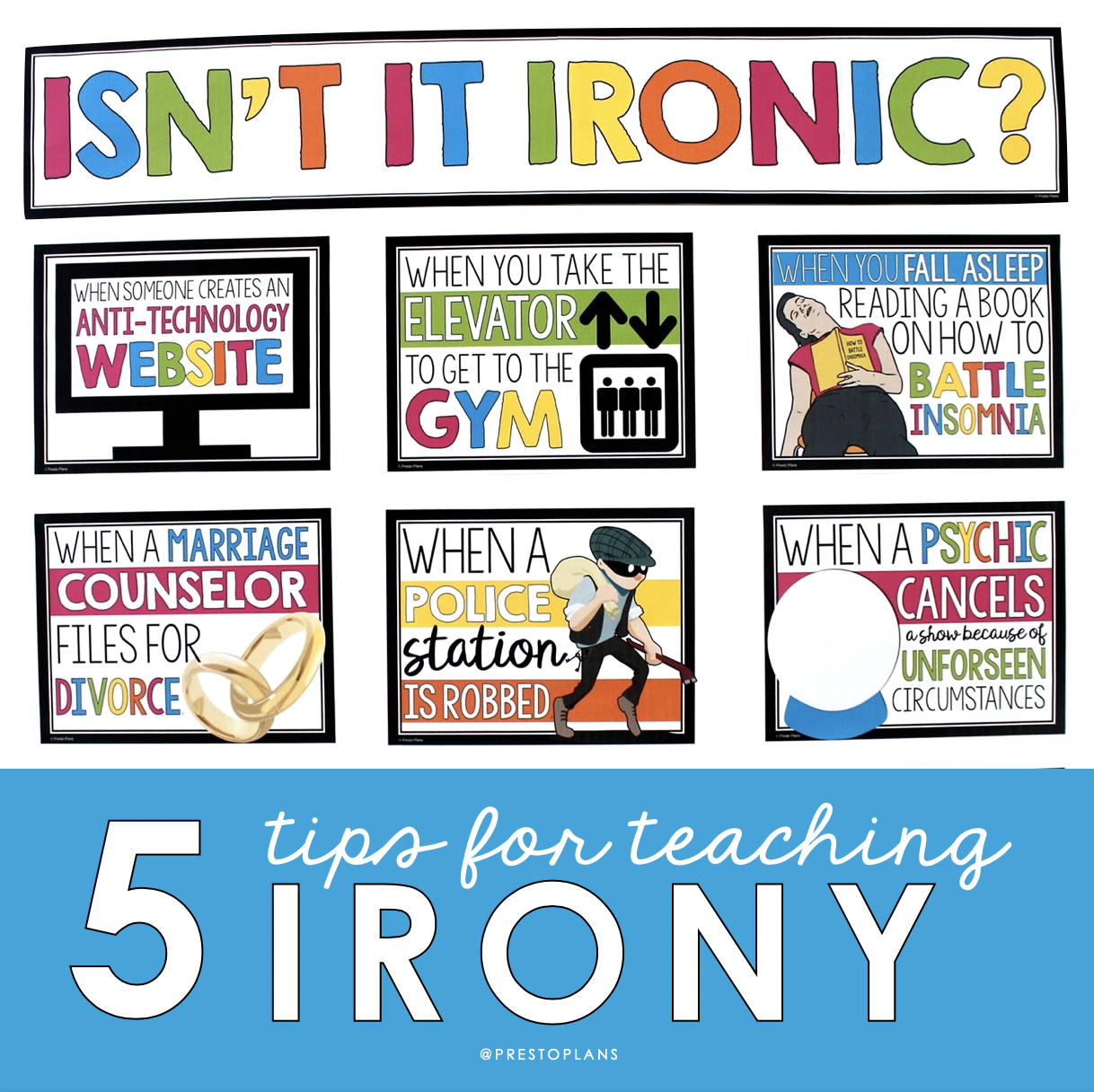
5 Tips for Teaching Irony
Do your students have a strong understanding of irony? In my experience, getting students to grasp the meaning of this literary device, particularly situational irony, can be a bit of a challenge. They tend to use the word loosely, often confusing irony with what is actually just coincidental. Over the years of teaching English, I have discovered some practical ways to help students understand irony—from learning the different types of irony to recognizing its appearance in art and everyday life. Below are my 5 best tips for teaching irony in the ELA classroom.
What are the three types of irony?
Before diving into my tips for teaching this concept, it is important to note the distinctions between the three different types of irony. There is verbal irony, dramatic irony, and situational irony. I have found this last type—situational irony—to be the one that causes the most confusion. Students tend to have a better understanding of dramatic and verbal irony, so I tend to focus most of my efforts on situational as it is the one that is most difficult to understand.
Here is a simple breakdown of the three different types of irony with some examples:
- Verbal Irony: This is a figure of speech where the speaker says one thing but means the opposite. An example of verbal irony would be saying, “You look really nice today!” to a person who is clearly disheveled.
- Dramatic Irony: This is when the reader (or viewer) knows something that the character does not. For example, we might see dramatic irony used in a scary movie when we, the viewer, know the monster is approaching, while the character, who will be its victim, is totally unaware. Knowing the monster is approaching, we can interpret different meanings out of their words and actions that can often add humor or suspense.
- Situational Irony: Situational irony is when the outcome is the direct opposite to that which was built up and expected. This is the type of irony that is most often confused with coincidence. There is a distinction between the two, however. Coincidence is not such a charged (or poetic) reversal of expectations.
1. Share Examples in Different Forms
Even after breaking down the three types, students will still likely struggle to fully grasp what irony is. My first tip for how you can help solidify their understanding of irony is to show them examples in different forms. I like to show students real-world, visual, film, and literary examples of irony:
- Real-World Examples: These are real-world occurrences that would be ironic. A fire station burning down is a real-world example of irony. A police station getting robbed is another.
- Visual Examples: Seeing the phrase “Nothing is written in stone” carved in stone would be a visual example of irony as would seeing the word “school” spelled wrong. You can find visual examples of irony like these ones online.
- Literary Examples: Show students examples of irony in literature. In Shakespeare’s Romeo and Juliet, Juliet takes a potion to make it appear as if she has died. The audience knows that she is alive, but Romeo does not which leads him to take his own life.
- Film Examples: You can do the same thing using movie examples. In Shrek, When Donkey asks if he can stay, Shrek says, “Of course!” This is verbal irony because he says one thing but obviously means the opposite.
To take this a step further, you can get students to identify (out loud) which types of irony are used in the examples you give (i.e. verbal, dramatic, situational).
2. Give Opportunity for Practice & Student Example Writing
I think there is value in exposing students to a variety of examples, so I do this with an irony practice assignment. These consist of several written examples of irony. Students must read each example, identify which type of irony it is, and then explain why it is this type of irony. Here’s one example I use:
- “Mrs. Jones was getting sick of Brent’s excuses for constantly leaving class. When he asked again to go to the restroom, she responded “Sure, it’s not like we do anything important in this class anyway.”
This, of course, would be an example of verbal irony. Mrs. Jones is saying one thing and meaning the opposite. She does not really mean that they do not do anything important in her class. She thinks the opposite.
I also suggest getting students to create their own examples. These can be similar to those that were created for them on the practice assignment. You can get your students to write examples of each of the three types on task cards. Or you might get students to actually write something—a story, for example—that employs irony!
3. Read Short Fiction Using the Device
My next tip is to get students to read short fiction that employs this device. Although isolating the term and its three types is necessary at first, ELA students should also be able to identify and understand it in the broader context of a whole story. To help with this, I like to assign stories that demonstrate clear examples of irony. Below are some stories that you can integrate into your curriculum for this purpose. Each one exemplifies situational irony.
- The Sniper by Liam O’Flaherty: This story follows the perspective of a sniper in the Irish Civil War. There is irony in the surprise ending of the story when “the sniper turned over the dead body and looked into his brother’s face.” The protagonist’s “enemy” turns out to be the opposite: his own brother.
- The Landlady by Roald Dahl: The Landlady tells the story of Billy Weaver, a successful businessman who travels to a small city called Bath. He finds a local bed and breakfast for lodging that is run by a landlady. The story builds up the idea that the landlady is a sweet and generous person. In the end, however, we learn that the opposite is true.
- The Gift of the Magi by O. Henry: This one is about a young couple who, having very little money, struggle to buy each other the Christmas gifts they think one another deserves. Jim and Della both sell their most prized possessions to buy one another a gift that is specifically designed for the possession that they each sold.
- The Monkey’s Paw by W. W. Jacobs: In The Monkey’s Paw, Sergeant-Major Morris arrives at the White family residence with a monkey’s paw that has the power to grant three wishes. The wishes, however, create the exact opposite of their desired effect.
4. Give Students an Irony Reading Challenge
Want to make your students extra engaged in your irony lesson? Add a competitive element. My favorite way to raise the stakes is with the Reading Escape Challenge. For this activity, students need to use their understanding of the different types of irony to reveal a code and escape from vicious alligators! This is a fun and interactive way to develop your students’ understanding of this device.
5. Use Intentional Classroom Decor
The last tip I have for teaching irony is to use intentional classroom decor. Incorporate irony into your classroom environment so that students are surrounded by helpful reminders of what they have learned. I like to hang “Isn’t It Ironic?” posters on my classroom walls to help students retain their understanding of situational irony.
Another idea is to start class each week with an ironic moment of the week bell-ringer. Simply hang a new “ironic moment” poster on the wall each week and get students to raise their hands to explain why the example is ironic at the beginning of class!
There you have it! I hope you found these tips for teaching irony useful! You can grab ready-to-use irony resources by clicking the images below. If you are looking for other tips and resources for teaching ELA skills, click here!

Search the blog for what you are teaching
GIVEAWAYS
sent straight to your inbox!
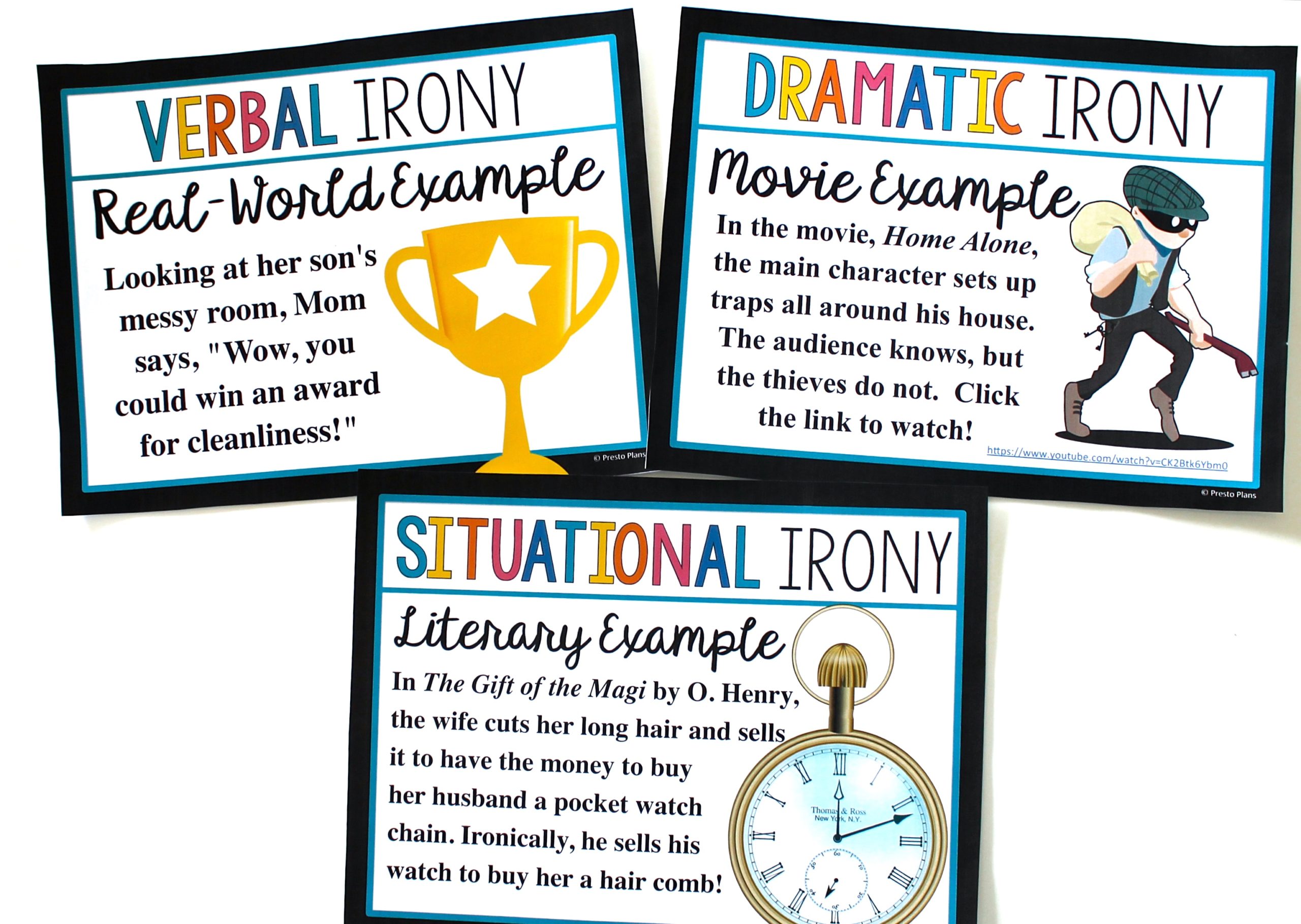
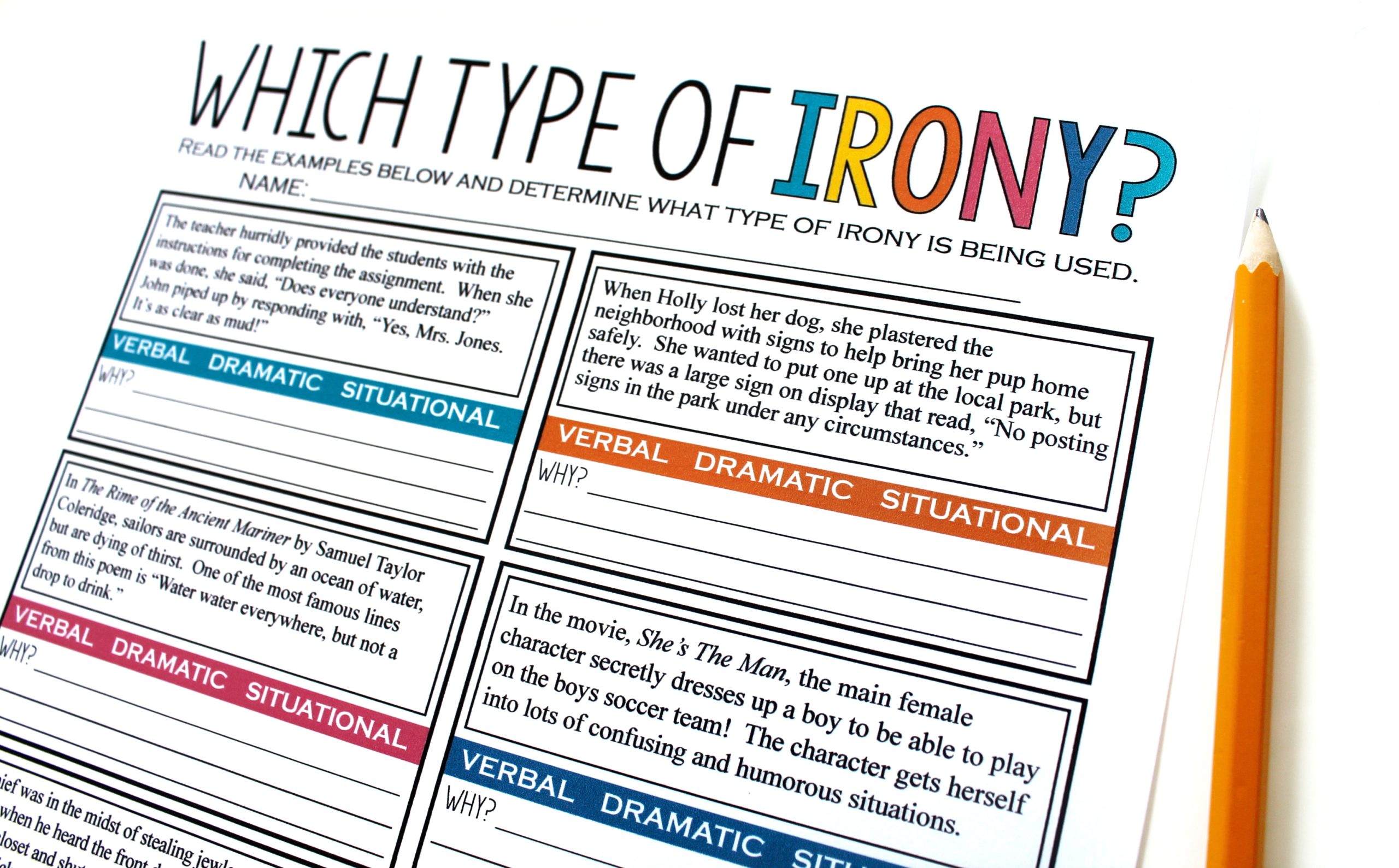
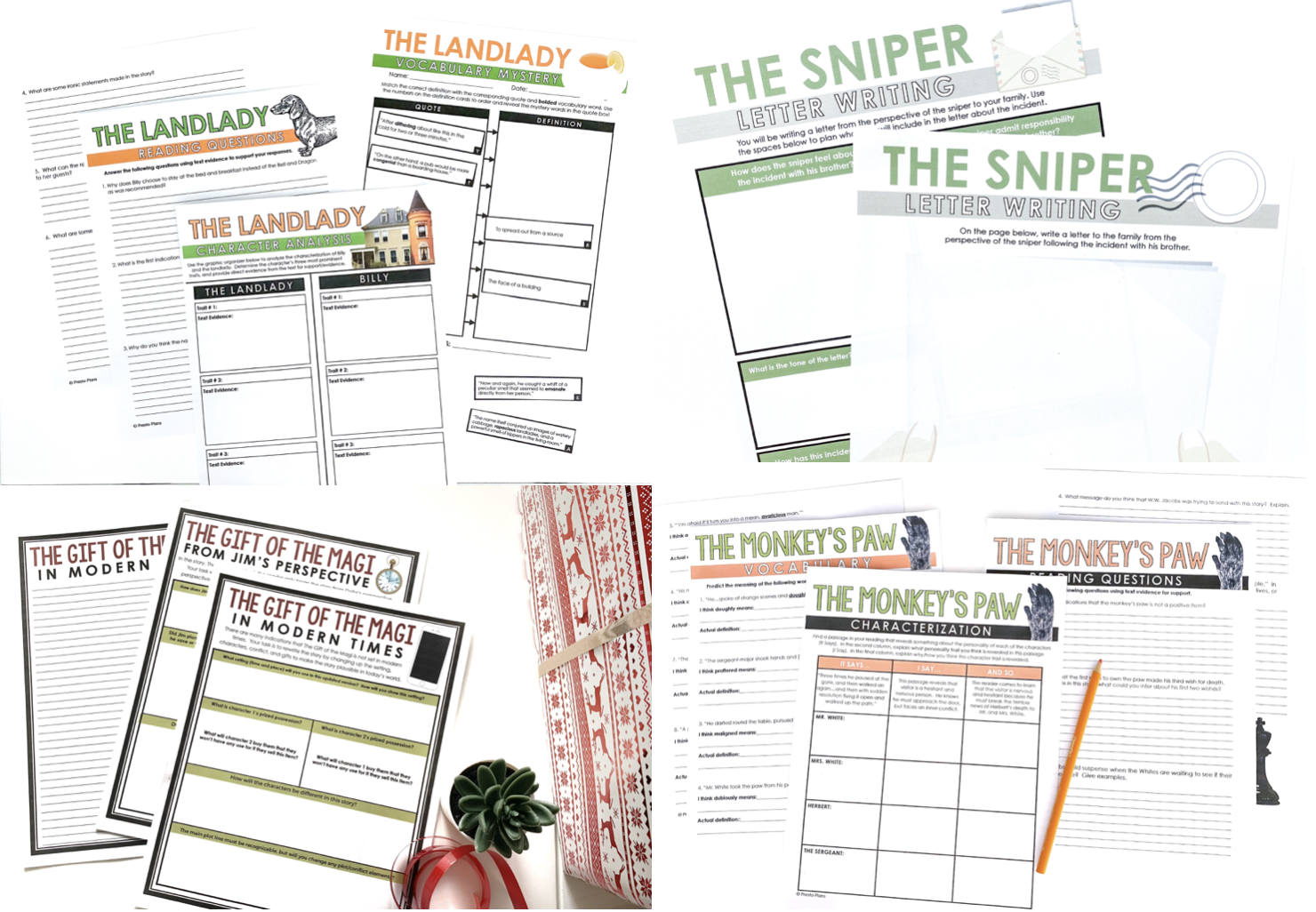
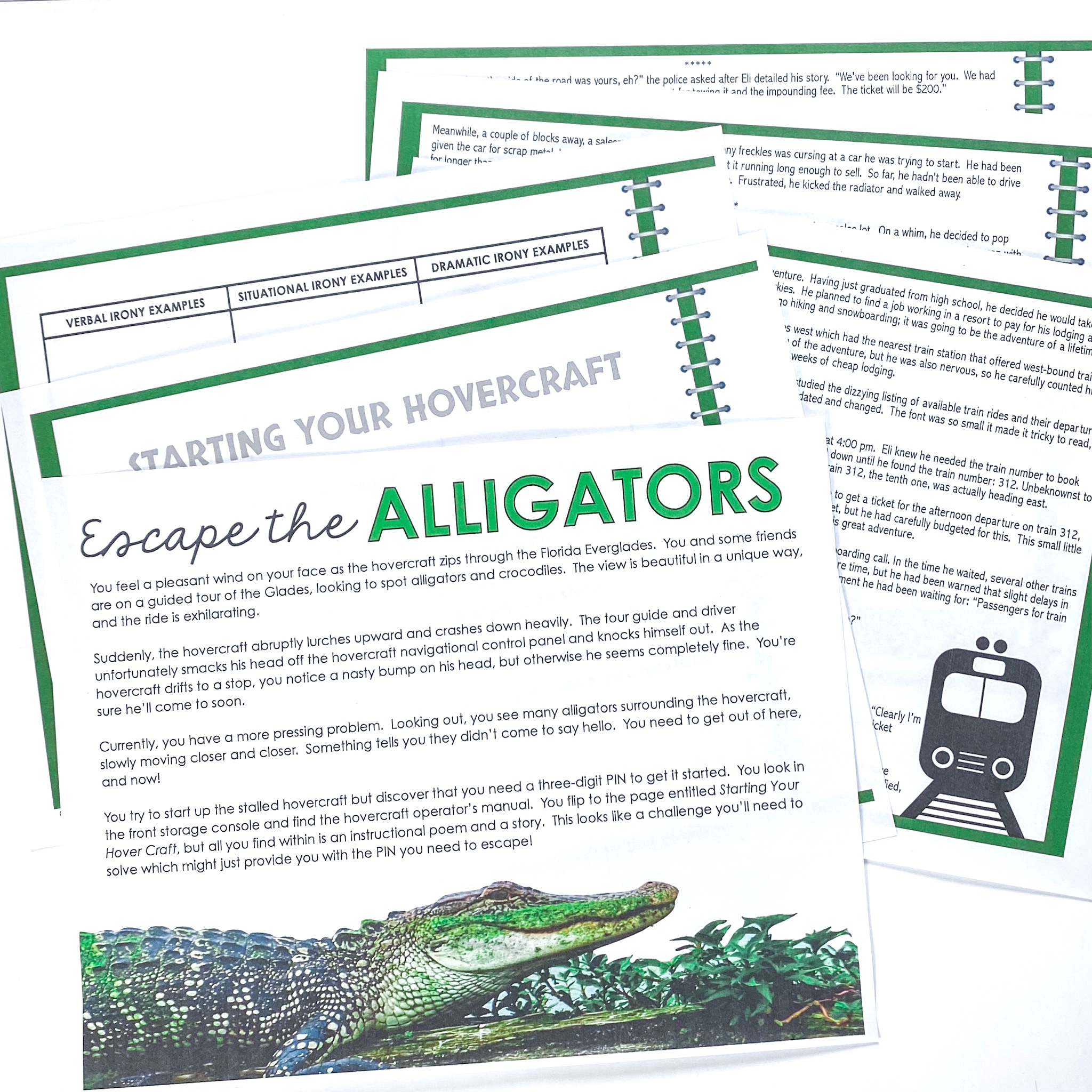
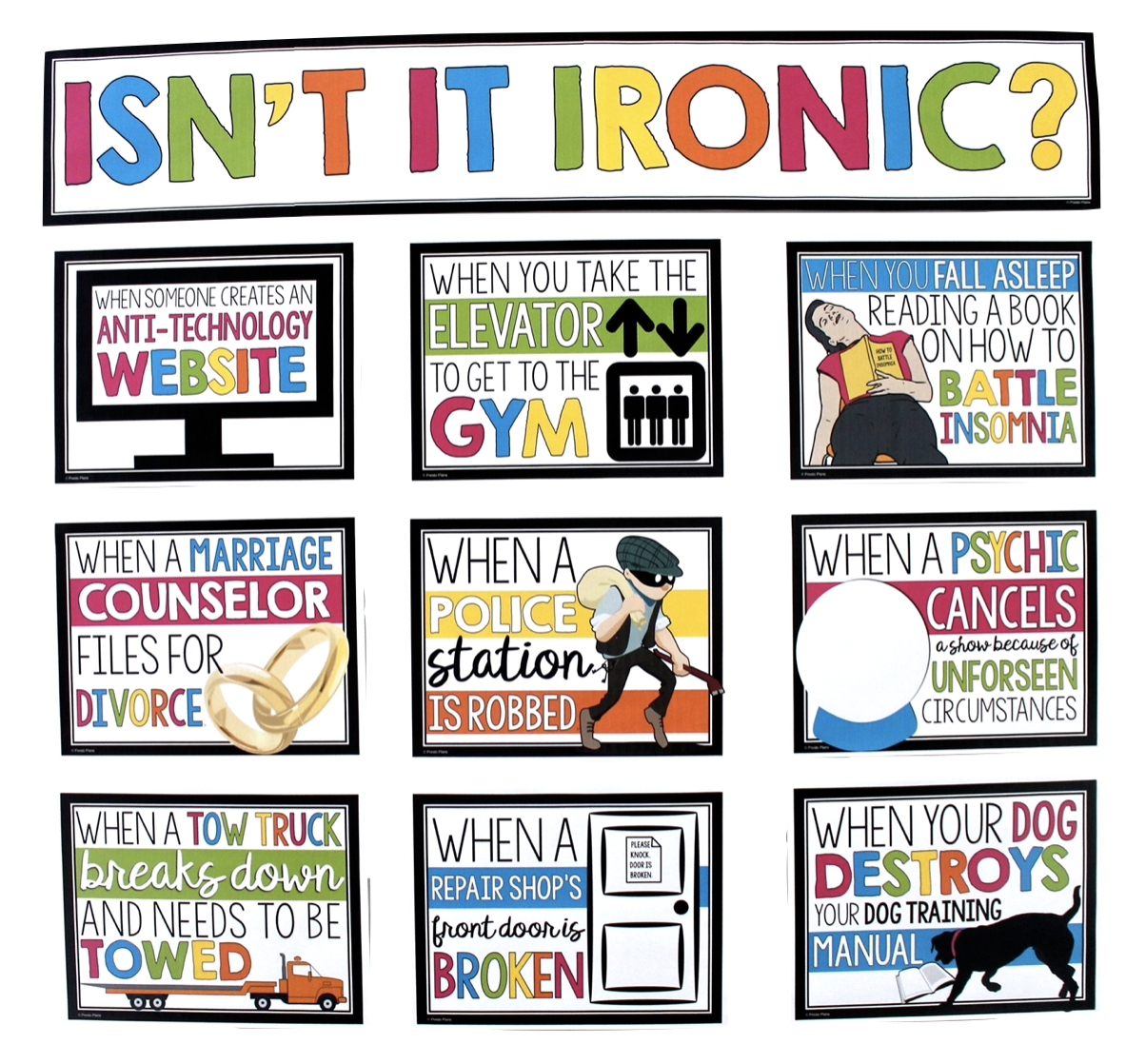
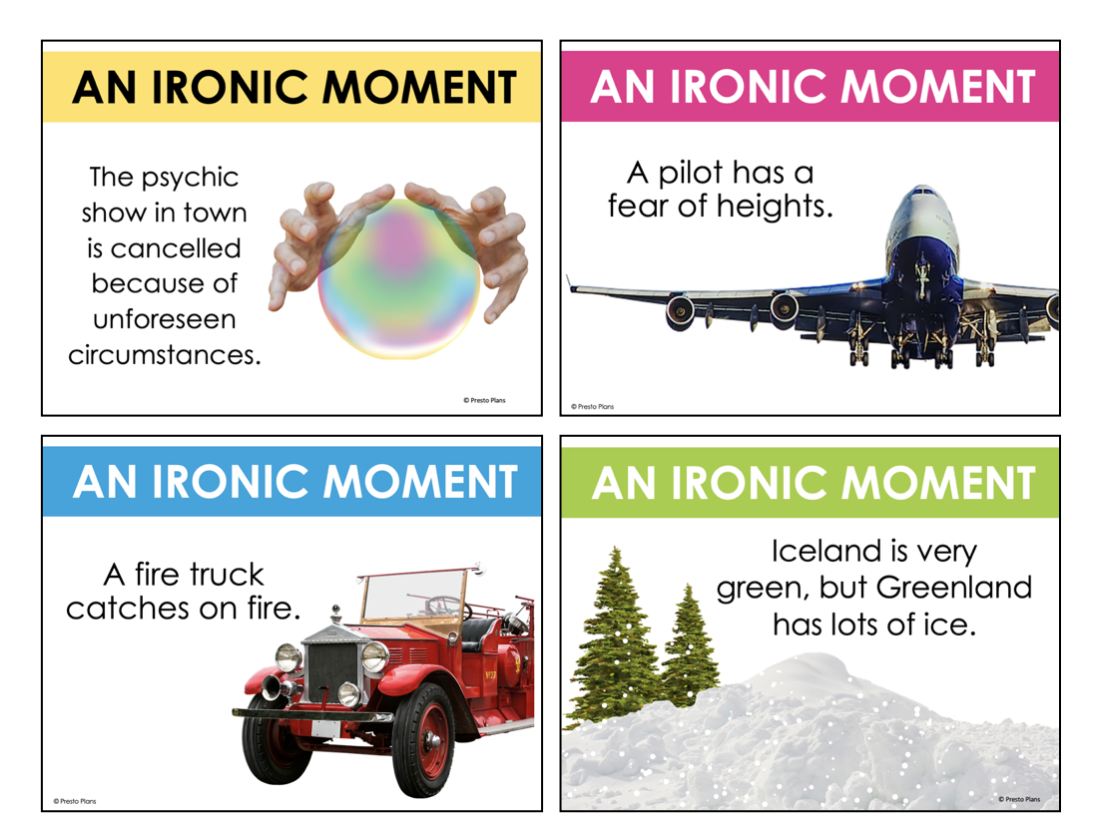




share this post